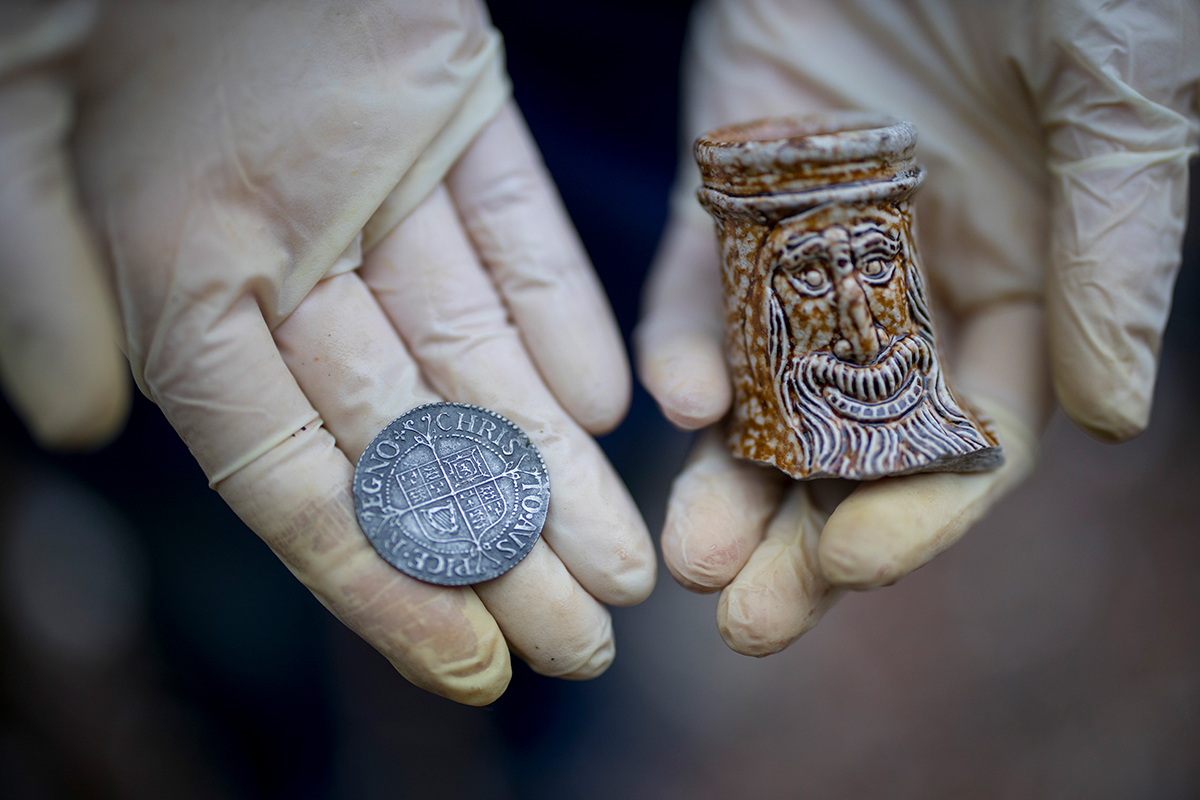Medieval pilgrims’ tokens and other artifacts bring hobbyists into another world.Religious tokens worn by pilgrims in the Middle Ages and a slew of other odd objects are turning up on the muddy banks of the Thames in London, thanks to a group of scavengers known as mudlarks.
“Twice a day, the low tide pulls the flowing edges of the Thames back — dropping the river level by 20 feet in some areas — revealing centuries of forgotten London life in the fragments that poke out from the newly exposed land, known as the foreshore,” reports the New York Times.
The very term mudlark is a revival for modern hobbyists of a very old English practice. The name was first given to the Victorian-era poor “who scrounged for items in the river to sell, pulling copper scraps, rope and other valuables from the shore,” the Times said.
“What you are looking for are straight lines and perfect circles,” said Lara Maiklem, a mudlarker who authored Mudlarking: Lost and Found on the River Thames. As she looks for man-made artifacts buried in the mud, she tells a reporter, “They sort of stand out from the natural shapes.”

One thing that turns up a lot are medieval pilgrim badges. “They were simple, cheap cast pewter souvenirs that pilgrims bought to prove they had reached their destination and to bring something of the power of the shrine back home with them,” said Maiklem, on her Instagram page. “Many pilgrimages began and ended at London Bridge, which had chapel midway across devoted to Thomas Becket whose shrine was at Canterbury Cathedral. It’s thought returning pilgrims might have thrown their badges into the river when they got back as thanks for a safe return, which explains why so many have been found by mudlarks over the years.”
In a short film by Kit Harwood, Maiklem explained that she started walking a path along the Thames “just to get away from city life.” But the practice has put her in touch with city life from times past. She recently found a very large shard of Roman pottery, thought to be from the 2nd century. Speaking of the feeling she has when she eyes something like a leather child’s shoe from 500 years ago, she said, “It’s that magic moment you pick it up and you’re the first person in centuries to touch it. For a moment time stands perfectly still.”
The Times explained, “In the center of London, where the heart of the Roman city stood, many of the finds are Roman or medieval. Farther west, evidence of prehistoric settlements have been found.”
“It’s another world,” said Maiklem, who has been going down to the foreshore for about 15 years. She said in the film that people often ask if she’s a treasure hunter. “It depends on how you define treasure,” she said. Her definition? “The things that link me to history or a forgotten individual.”








